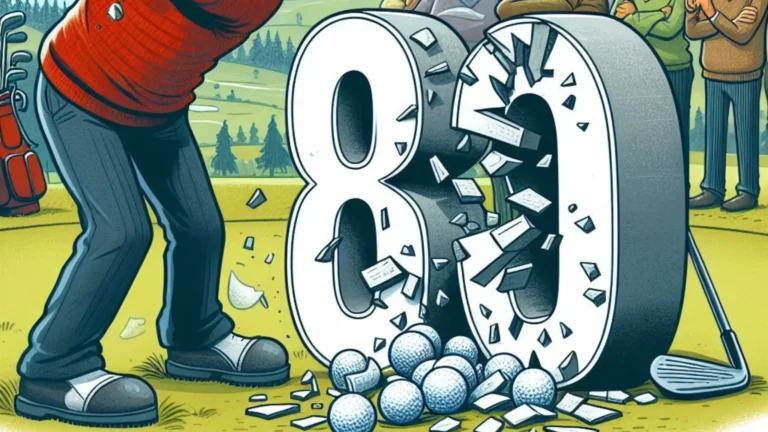Golf Wedge Angles Chart
The Golf Wedge Angles Chart is a valuable tool for every golfer’s collection, providing a comprehensive visual representation of loft angles across various wedges. This chart serves as a reference, determining the loft angles of pitching, gap, sand, and lob wedges. It is critical in helping golfers understand the nuances of each wedge’s loft, allowing them to make informed decisions about club selection for various shots on the course.
Understanding and applying this chart is a critical component of a golfer’s short game strategy, as it has a significant impact on shot precision, distance control, and overall performance around the green.
Types of Golf Wedges
Golf wedges are a collection of specialized clubs designed to handle specific short game scenarios. The pitching wedge, with lofts ranging from 46 to 48 degrees, is the preferred club for approach shots, providing moderate loft suitable for mid-range distances. The aptly named gap wedge fills the gap between pitching and sand wedges, with loft angles ranging from 50 to 54 degrees.
This wedge allows golfers to cover distances that would be too short for a pitching wedge but too long for a sand wedge. The sand wedge, with loft angles ranging from 54 to 58 degrees, is indispensable in bunker play and shorter approach shots around the green, thanks to its high loft designed to quickly elevate the ball from sand traps.
Finally, the lob wedge, with loft angles ranging from 58 to 64 degrees, provides exceptional loft for precision shots with steep trajectories, making it ideal for clearing obstacles and hitting finesse shots around the green. Each wedge type is designed to address specific scenarios, providing golfers with the versatility they require for a well-rounded short game.
Understanding Loft Angles
Loft angles in golf clubs, particularly wedges, are the vertical angle of the clubface relative to the ground. This critical component has a significant impact on the trajectory, distance, and control of a golf ball after impact. A higher loft angle leads to a higher ball trajectory, whereas a lower loft produces a flatter, more penetrating shot.
Understanding loft angles is critical because it directly influences shot selection and execution on the course. Golfers frequently use different lofted wedges for different situations; for example, a higher loft, such as a lob wedge, helps clear obstacles or execute delicate shots around the green, whereas a lower loft, such as a pitching wedge, is preferred for longer approach shots.
Mastery of loft angles allows golfers to make strategic club selections and adapt their game to effectively navigate various course conditions.
Golf Wedge Angles Chart
The Golf Wedge Angles Chart is a comprehensive visual reference tool that displays the various loft angles of different wedges used in golf. This chart typically depicts the specific degrees of loft for pitching, gap, sand, and lob wedges, assisting golfers in understanding the nuances of each club’s loft. It enables players to compare and contrast loft angles, providing a clear roadmap for choosing the best wedge based on shot distances, trajectory requirements, and course conditions.
This chart is an invaluable resource in a golfer’s toolkit because it displays loft angles side by side, providing insights into which wedge is best suited for specific situations on the course, thereby improving shot accuracy, distance control, and overall performance around the greens.
Factors Affecting Wedge Selection
Several important factors influence the choice of golf wedges for a player’s game. First and foremost, a golfer’s skill level is important, as beginners may benefit from more forgiving wedges with larger sweet spots, whereas advanced players may prefer wedges with greater shot-shaping control. Second, consider the course conditions, such as grass type, firmness, and green speed, when selecting an impact wedge.
Adjusting wedge loft and bounce based on these conditions can have a significant impact on ball spin and control. Furthermore, shot requirements such as desired distance, trajectory, and spin strongly influence wedge selection. Understanding these factors allows golfers to make informed decisions, such as choosing the best wedge to optimize their short game performance based on their individual skill set and the demands of the course.
Importance of Proper Wedge Selection
The significance of proper wedge selection in golf cannot be overstated, as it has a direct impact on a player’s ability to navigate the challenges of the short game. Choosing the appropriate wedge for a given shot or course condition has a significant impact on shot accuracy, distance control, and overall performance around the greens.
A well-chosen wedge enhances a golfer’s skill set, allowing for the precise execution of shots with the ideal trajectory and spin needed to navigate obstacles, land softly on the green, or escape difficult bunkers.
Proper wedge selection improves a player’s scoring opportunities by providing the tools needed to approach the pin with confidence, resulting in improved consistency and success in the short game, which is critical for lowering scores and mastering the art of golf.
Tips for Using the Golf Wedge Angles Chart
Using the Golf Wedge Angles Chart effectively needs a strategic approach to maximize its benefits. To begin, players must understand their own personal preferences and playing styles; wedge selections should be tailored to their strengths and shot preferences.
Experimenting on the practice range with various wedges while paying attention to the ball’s flight, spin, and landing can provide invaluable insights into each wedge’s performance. Seeking professional advice on wedge fitting allows you to fine-tune your selections based on your individual swing dynamics.
Furthermore, keeping an open mind to adapt and refine choices in response to changing course conditions improves the chart’s utility. Finally, using the Golf Wedge Angles Chart as a guide while considering personal play style and looking for opportunities for experimentation results in more informed decisions and better short game proficiency on the course.
Conclusion
Finally, the Golf Wedge Angles Chart proves to be an invaluable resource for golfers looking to improve their short game skills. This visual representation of loft angles across various wedges acts as a compass. Guiding players through the complexities of club selection on the course. Understanding and utilizing this chart not only helps golfers understand the nuances of loft angles. But it also allows them to make informed decisions that have a direct impact on shot accuracy, distance control, and overall performance around the greens.
By incorporating the chart’s insights into their game strategy, golfers can improve their skill set, increase scoring opportunities, and unlock new levels of precision and consistency in their short game, resulting in a better overall golfing experience.







